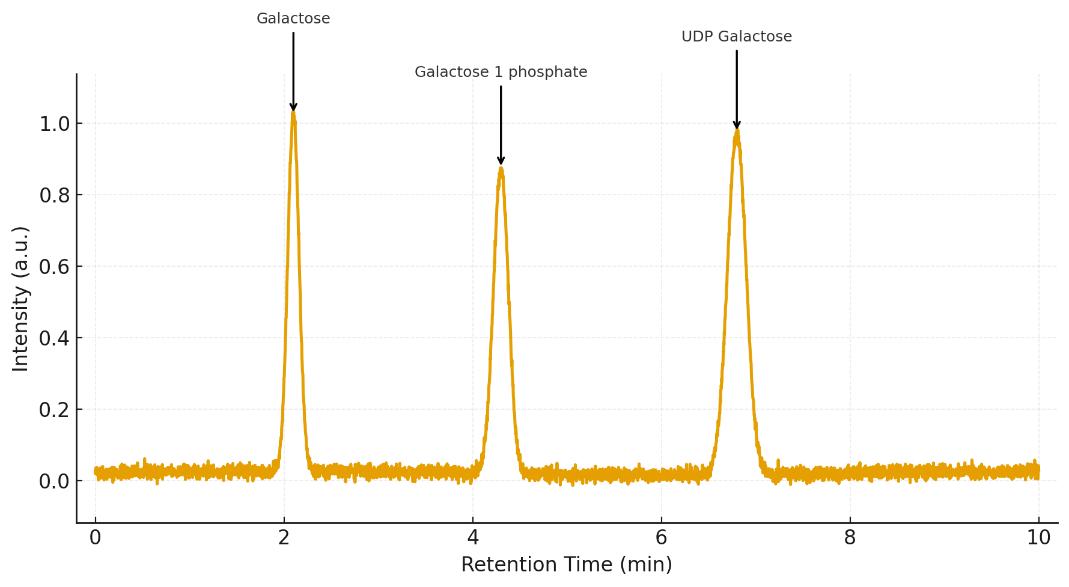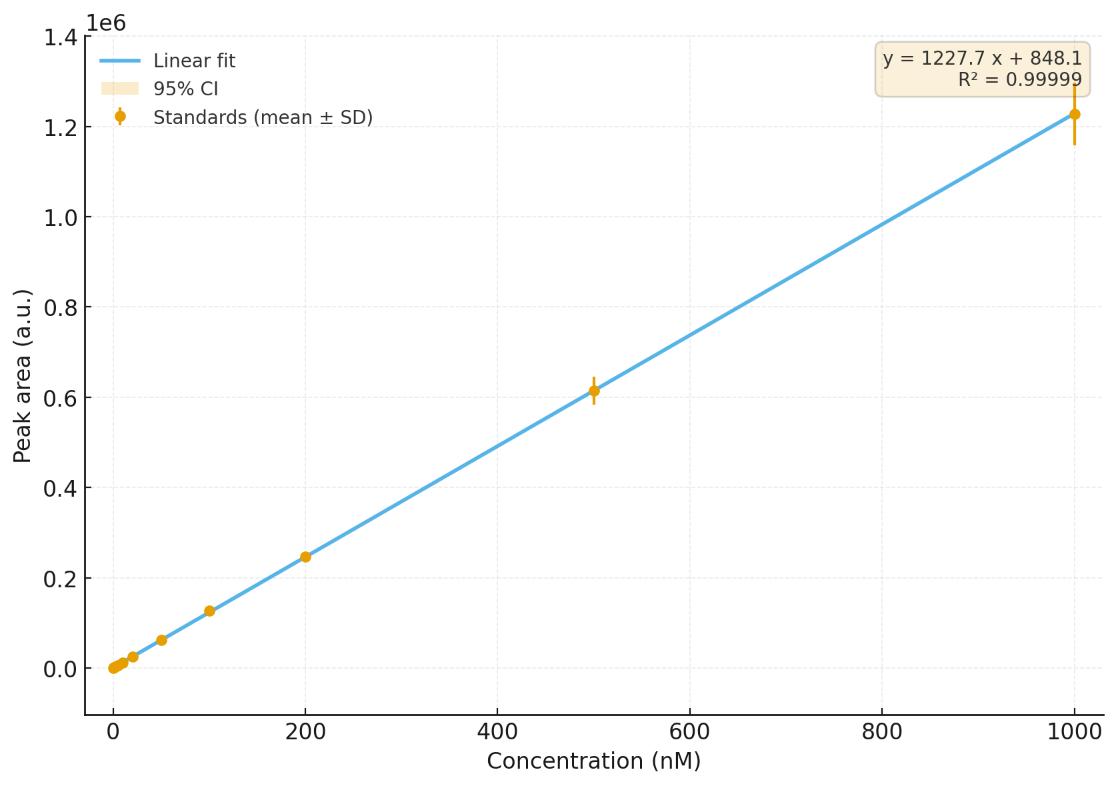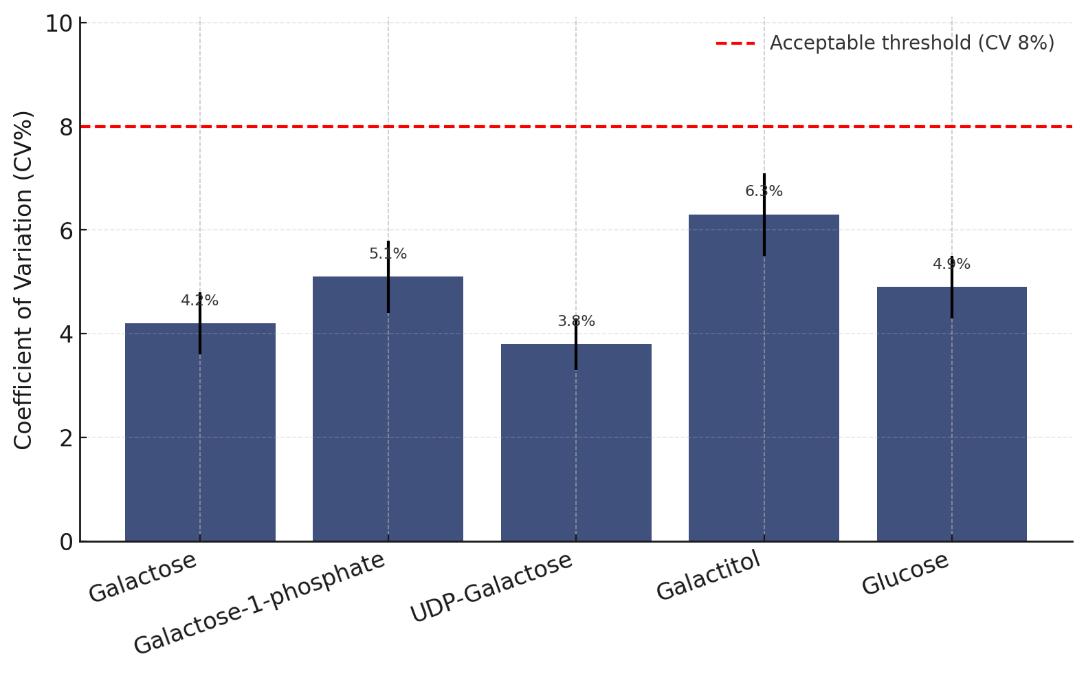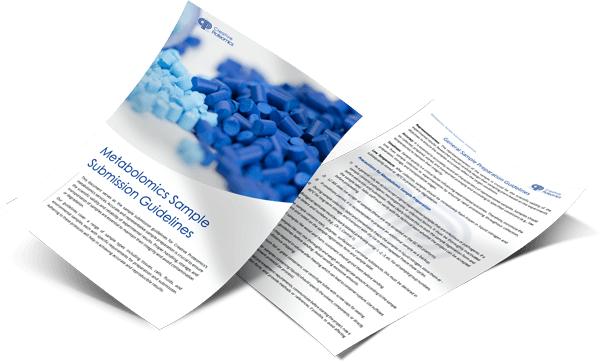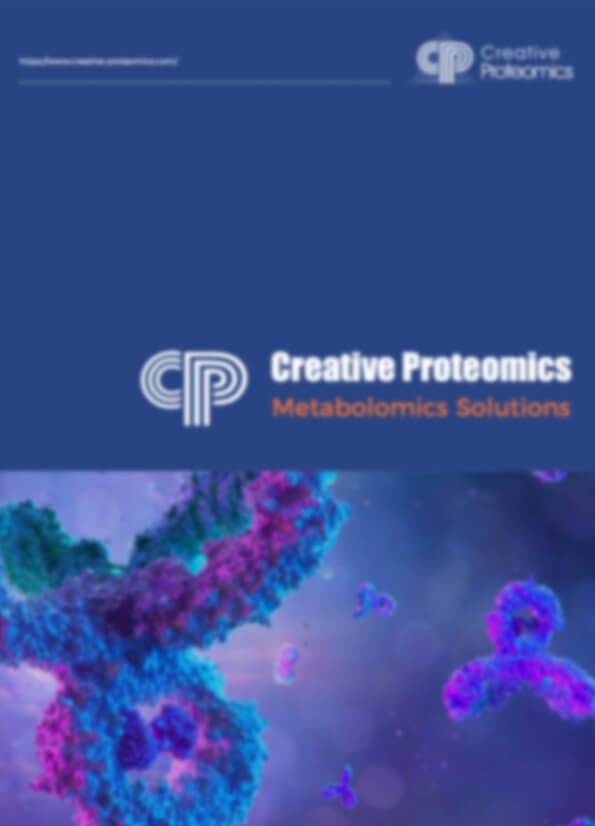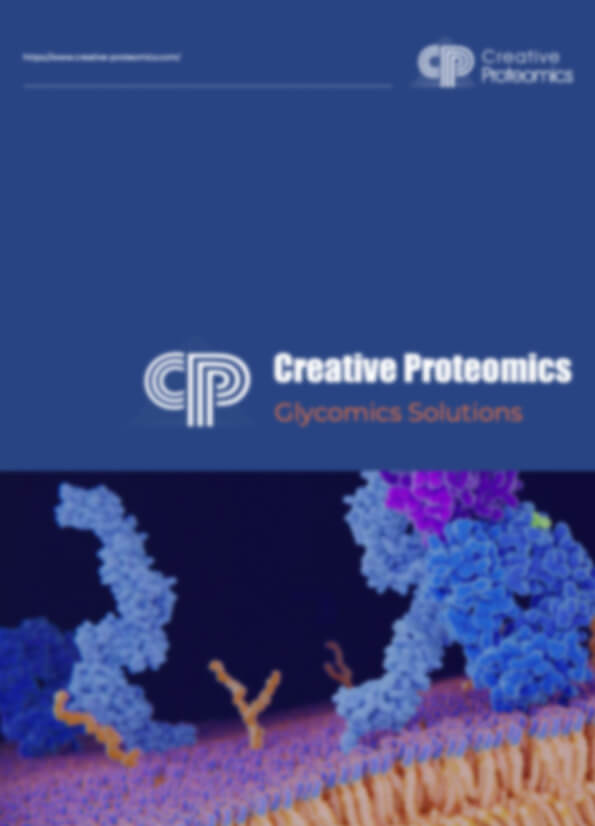Galactose Analysis Service
At Creative Proteomics, we deliver specialized galactose analysis service that transform complex sugar metabolism into clear, reliable data. Whether you aim to investigate metabolic pathways, evaluate glycosylation, or accelerate product R&D, our advanced platforms ensure accuracy, sensitivity, and reproducibility.
Why Choose Creative Proteomics?
- Comprehensive panels: Detect galactose and related metabolites in one workflow
- High sensitivity: LOD down to 5 nM with LC-MS/MS and IC-MS
- Reliable results: CV consistently < 8% across runs
- Custom solutions: Tailored assays for diverse matrices and project needs
Submit Your Request Now
×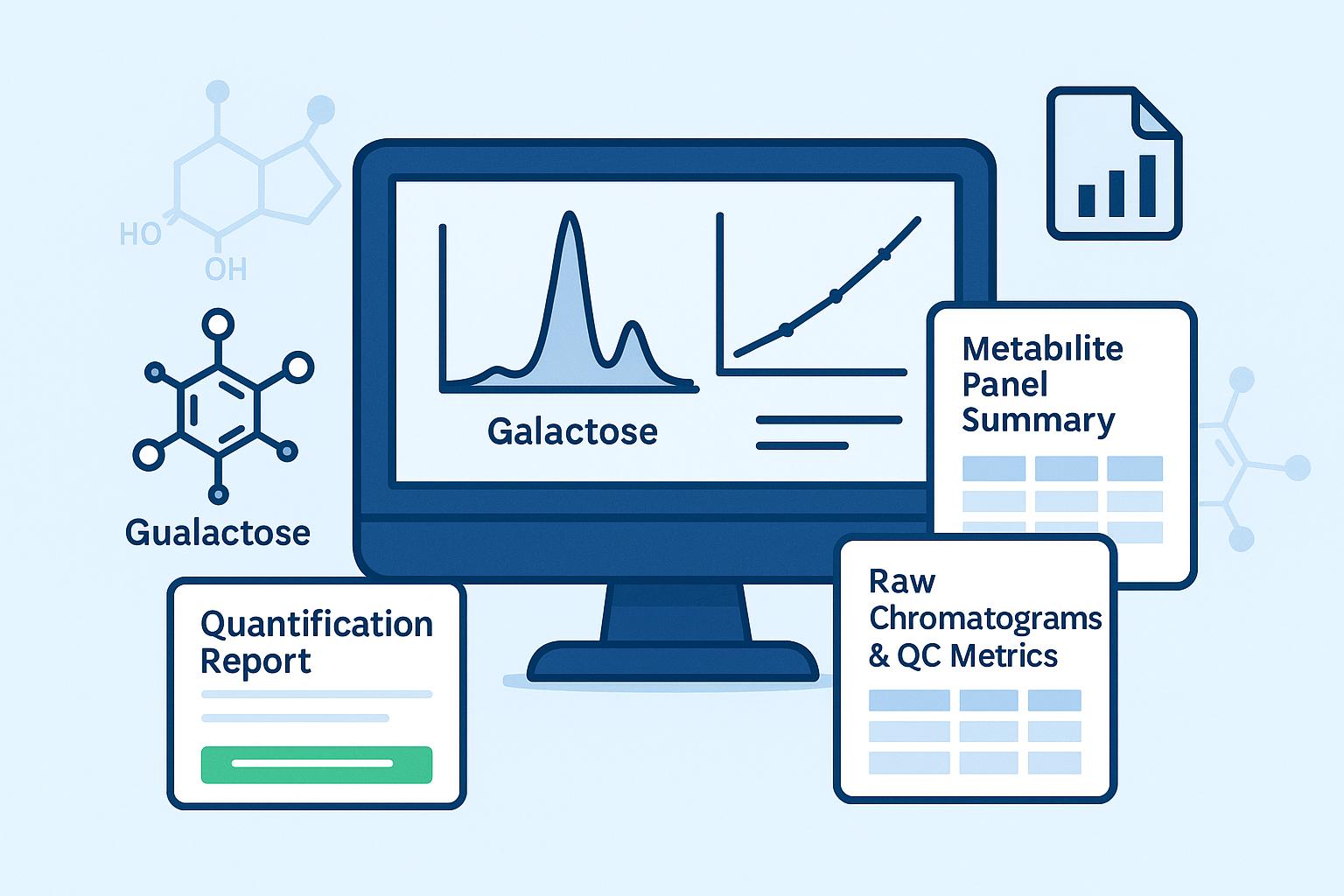
What You Receive:
- Raw & processed LC-MS/MS data (Excel, PDF)
- 7-point calibration curves with R²
- QC recovery and CV% metrics
- Concentration tables (ng/mL, ng/g, µmol/L)
- Optional PCA, heatmaps, or trend plots
- Problems We Solve
- What We Provide
- Technology Platform
- Sample Requirement
- Demo
- FAQs
What is Galactose?
Galactose is a naturally occurring monosaccharide involved in the biosynthesis of glycoproteins, glycolipids, and other glycoconjugates. It plays a vital role in cellular communication, membrane structure, and carbohydrate metabolism, primarily through the Leloir pathway—where it is converted into glucose-1-phosphate and integrated into energy cycles.
Analyzing galactose and its related metabolites offers critical insights for:
- Investigating sugar metabolism and energy dynamics
- Evaluating glycosylation in bioprocesses and functional food development
- Understanding nutrient response and metabolic shifts under stress or modulation
Due to its central role in metabolic and biosynthetic pathways, galactose serves as a valuable indicator molecule across fields such as biotechnology, nutrition science, and metabolic profiling.
What Problems We Solve for Our Clients
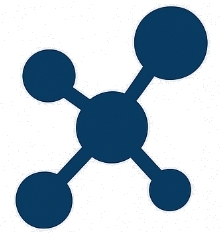
Low Sensitivity in Traditional Sugar Detection Methods
Problem: Conventional methods lack the sensitivity to detect galactose and its derivatives at low concentrations, especially in complex matrices like plasma or tissue.
Our Solution: We use LC-MS/MS and IC-MS platforms with detection limits as low as 5 nM, ensuring precise quantification even in trace-level samples.
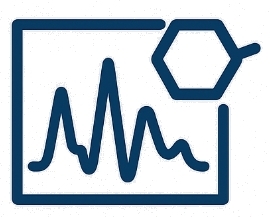
Interference from Structurally Similar Sugars
Problem: Galactose shares structural similarity with glucose, mannose, and other monosaccharides, often leading to inaccurate readings.
Our Solution: High-resolution separation techniques (e.g., HPAEC-PAD and ion chromatography) effectively distinguish galactose from isomers, delivering uncompromised data clarity.
Lack of Standardized Metabolite Panels
Problem: Researchers often require multiple sugar metabolites in a single run but lack access to validated, integrated testing panels.
Our Solution: We offer a complete galactose metabolic panel, covering key intermediates such as Galactose-1-phosphate, UDP-Galactose, and Galactitol in one streamlined workflow.

High Variability and Poor Reproducibility
Problem: Inconsistent sample handling and analytical variability can lead to unreliable results.
Our Solution: Our protocols include internal standards, spike-in controls, and QC checkpoints throughout the workflow, ensuring CV < 8% across runs.
Specific Galactose Analysis Services Offered by Creative Proteomics
- Quantitative Analysis of Key Pathway Intermediates
Accurate measurement of metabolic intermediates involved in the Leloir pathway, including enzymatic products and sugar nucleotides, using LC-MS/MS and IC-MS platforms. - High-Resolution Isomer Differentiation
Specialized separation techniques (e.g., HPAEC-PAD and IC-MS) enable clear distinction between structurally similar monosaccharides—such as galactose, glucose, and mannose—eliminating signal overlap and increasing data precision. - Detection of Sugar-Derived Polyols
Sensitive profiling of sugar alcohols like galactitol under various metabolic states, applicable to studies of osmotic stress, fermentation efficiency, and sugar reduction mechanisms. - Custom Metabolite Panel Development
Fully configurable galactose-related panels that integrate only the metabolites relevant to your project goals, enhancing analytical focus and cost-efficiency. - Comparative Sugar Utilization Profiling
Assess the differential uptake or conversion rates of galactose versus other monosaccharides in biological or engineered systems—ideal for functional food research and microbial optimization. - Stable Isotope Tracing (Optional Add-on)
13C- or 2H-labeled galactose tracking services to support metabolic flux analysis, turnover rate measurement, and pathway validation.
Detectable Galactose-Related Metabolites
| Comprehensive Panel of Galactose-Related Metabolites | ||||
|---|---|---|---|---|
| D-Galactose | Galactose-1-phosphate | UDP-Galactose | Galactitol (Dulcitol) | Galactonate |
| Tagatose | Glucose | Glucose-6-phosphate | UDP-Glucose | Lactose |
| Mannose | Fructose | Galacto-oligosaccharides | Sedoheptulose-7-phosphate | Sorbitol |
| Myo-inositol | Ribose-5-phosphate | Galactosylceramides* | Other nucleotide sugar derivatives* | |
Advantages of Galactose Analysis Service
- Ultra-low detection limits
Quantification down to 5 nM for galactose and key intermediates using LC-MS/MS and IC-MS platforms. - Wide dynamic range
Accurate linear quantification from 5 nM to 1000 nM, ensuring coverage across physiological and stress-related concentrations. - High reproducibility
Method precision with coefficient of variation (CV%) consistently < 8% across technical replicates. - Isomer resolution capability
Differentiates galactose from glucose, mannose, and tagatose via HPAEC-PAD or IC-MS, eliminating false positives. - Quantitative recovery controls
Spike-in standards yield 85–110% recovery, ensuring data reliability in complex biological matrices. - Customizable metabolite panels
Targeted analysis of up to 15+ galactose-related metabolites per run, including sugar alcohols and nucleotide sugars.
Workflow for Galactose Analysis Service
1. Sample Submission & Consultation
- Clients provide sample type, volume, and background information.
- Our technical team confirms study objectives and recommends the most suitable analytical platform.
2. Sample Preparation & Quality Control
- Protein precipitation, derivatization (if required), and internal standard spiking.
- QC checkpoints to monitor matrix interference, recovery rate, and stability.
3. Chromatographic Separation
- Application of LC, IC, or HPAEC platforms to achieve high-resolution separation of galactose and isomers.
4. Instrumental Analysis
- Targeted quantification using LC-MS/MS or complementary platforms (GC-MS, IC-MS).
- Dual-run verification for critical metabolites.
5. Data Processing & Interpretation
- Raw spectra converted into quantitative profiles using validated calibration curves.
- QC evaluation to ensure CV < 8% reproducibility.
6. Reporting & Delivery
- Comprehensive report including quantification data, chromatograms, and optional statistical analysis (e.g., PCA, pathway mapping).
- Results delivered in publication-ready formats (Excel, PDF).
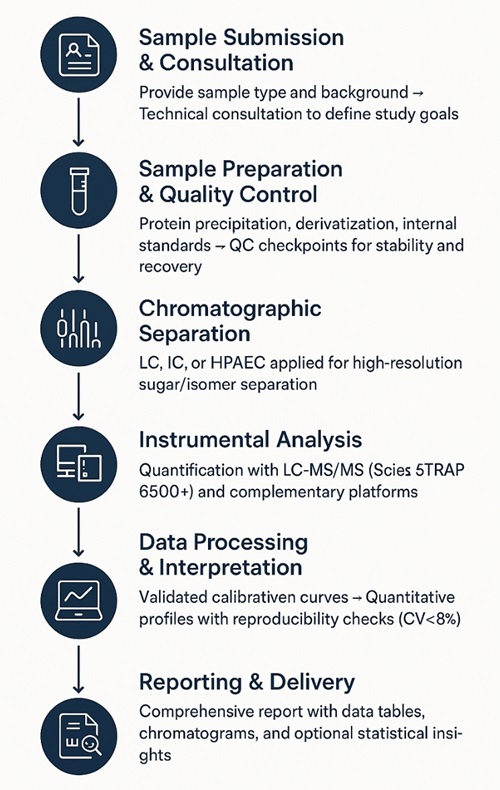
Technology Platform for Galactose Analysis Service
- LC-MS/MS (Sciex QTRAP 6500+)
High sensitivity (LOD ~5 nM) and selectivity with isotopically labeled standards, ideal for targeted quantification of galactose metabolites. - GC-MS (Agilent 7890B + 5977 MSD)
Effective for derivatized sugars and polyols such as galactitol, with strong structural confirmation. - IC-MS (Thermo Dionex ICS-6000)
Enables precise separation of galactose from glucose, mannose, and other isomers in complex matrices. - HPAEC-PAD (Dionex ICS-5000+)
Provides high-resolution sugar profiling without derivatization, suitable for routine monosaccharide and oligosaccharide analysis.
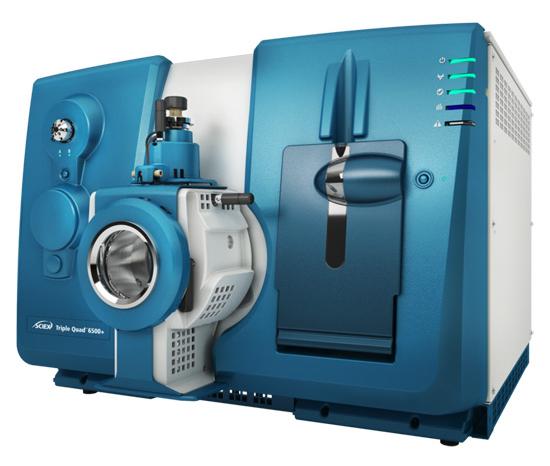
SCIEX Triple Quad™ 6500+
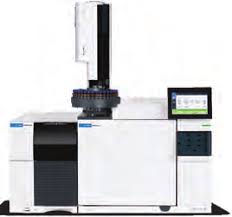
Agilent 5977B GC/MSD
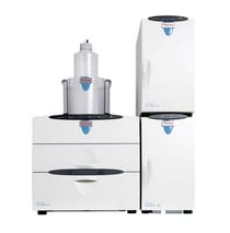
Dionex ICS-5000+
Sample Requirements for Galactose Analysis Service
| Sample Type | Minimum Volume / Amount | Storage Temperature | Notes |
|---|---|---|---|
| Plasma | ≥ 100 µL | -80 °C | Collect in EDTA or heparin tubes; avoid repeated freeze–thaw cycles |
| Serum | ≥ 100 µL | -80 °C | No additives; avoid hemolysis |
| Whole Blood | ≥ 200 µL | -80 °C | Stabilize immediately; use anticoagulant tubes |
| Tissue | ≥ 30 mg | -80 °C | Flash-freeze in liquid nitrogen; store in cryovials |
| Urine | ≥ 500 µL | -80 °C | First-morning sample preferred; midstream collection |
| Cell Lysates | ≥ 1 × 10⁶ cells | -80 °C | Provide buffer composition for method compatibility |
| CSF (optional) | ≥ 100 µL | -80 °C | Collect in polypropylene tubes; avoid contamination |
Demo Results
FAQ of Galactose Analysis Service
How does galactose availability influence glycosylation pathways in cell-based systems?
Galactose contributes directly to nucleotide sugar pools (e.g., UDP-Galactose), which are essential for glycoprotein and glycolipid synthesis. Its intracellular concentration can affect glycosylation patterns and overall biosynthetic output in cell-based production systems.
What are the challenges of galactose analysis in plant-based or complex food matrices?
Plant and food-derived samples often contain interfering polyols, phenolics, and sugar isomers. Accurate galactose quantification in these matrices requires sample-specific cleanup strategies and analytical separation methods that resolve structural similarities.
Can galactose profiling be used to optimize microbial fermentation or sugar conversion efficiency?
Yes. Galactose utilization profiling helps assess how efficiently microbial strains convert galactose into desired products. It supports metabolic engineering, bioconversion yield optimization, and feedstock compatibility evaluation in industrial bioprocesses.
How can sugar isomer differentiation improve the quality of carbohydrate research?
Galactose shares structural features with glucose, mannose, and tagatose, which can lead to cross-detection. High-resolution separation and accurate mass spectrometry ensure reliable differentiation, reducing analytical ambiguity in pathway studies.
Why include polyol profiling (e.g., galactitol) in a sugar metabolism study?
Polyols like galactitol are formed through alternative metabolic routes. Their quantification provides insight into flux diversion under stress, redox imbalance, or enzymatic bottlenecks—making them valuable in system-level sugar metabolism modeling.
Is stable isotope tracing applicable in galactose pathway research?
Yes. Using 13C- or 2H-labeled galactose enables metabolic flux analysis (MFA), offering insights into pathway kinetics, substrate channeling, and metabolic branching. It is especially useful in microbial engineering and functional genomics research.
What role does galactose analysis play in prebiotic development or functional food design?
Quantifying free and bound galactose in oligosaccharide-enriched ingredients (e.g., GOS) helps evaluate their fermentability, composition, and consistency. This supports functional food formulation, prebiotic screening, and sugar source validation.
How does reproducibility in galactose analysis support regulatory or product QA/QC workflows?
Consistent quantification across batches ensures analytical confidence in sugar composition testing. This is critical for batch release, labeling verification, and maintaining process stability in food, feed, and biomanufacturing pipelines.
Learn about other Q&A about proteomics technology.
Publications
Here are some of the metabolomics-related papers published by our clients:
